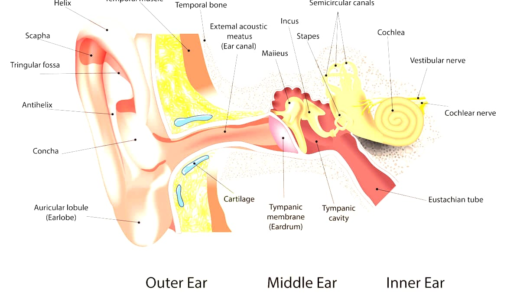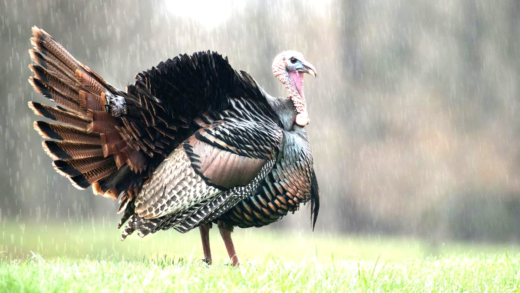Bird migration is driven by natural signals like daylight and temperature, with weather conditions playing a significant role in navigation and timing. Non-migrating birds face challenges like food scarcity and increased competition. Food sources are crucial for migration timing, and migration supports ecosystem health through pollination and seed dispersal.
How Do Birds Know When It’s Time to Migrate: The Role of Daylight and Temperature
Bird migration is a fascinating phenomenon, deeply influenced by natural signals such as daylight and temperature. As the seasons change, birds rely on these cues to determine the optimal time for migration. Daylight, or photoperiod, plays a crucial role in triggering hormonal changes that prepare birds for their long journeys. During spring and fall, increasing or decreasing daylight hours stimulate the production of hormones that signal the need to migrate.
Temperature also serves as a critical factor. Birds monitor the temperature changes in their habitats. Warmer temperatures in spring indicate that food sources will become available, prompting birds to start their migration. Conversely, as temperatures drop in the fall, it signals that winter is approaching, urging birds to head south.
In summary, birds know when to migrate primarily through:
- Changes in daylight hours (photoperiod)
- Temperature fluctuations
These natural signals are essential for the survival of migratory birds, ensuring they arrive at their destinations at the right time for feeding and breeding.
Signals for Bird Migration: How Do They Detect Seasonal Changes?
Birds detect seasonal changes through a combination of environmental cues and internal biological processes. Various signals influence their migration decisions, including:
- Food Availability: As food becomes scarce in colder months, birds are prompted to migrate to warmer areas where food is plentiful.
- Weather Patterns: Changes in weather, such as the onset of cold fronts, can signal birds to migrate.
- Social Cues: Some species rely on flock behavior. When experienced members of a flock start their migration, others often follow.
Research indicates that birds can even sense changes in the Earth’s magnetic field and use it as a navigation tool. This ability to detect seasonal changes ensures that birds migrate at the right time, optimizing their chances for survival.
Physical Changes in Birds Before Migration: What to Look For
Before embarking on their migration journeys, birds undergo several physical changes that prepare them for the long flights ahead. These changes include:
- Weight Gain: Many birds increase their body weight significantly by storing fat, which provides the necessary energy for migration.
- Feather Molting: Birds often molt before migration, replacing old feathers with new, more efficient ones for flight.
- Hormonal Changes: Hormonal shifts promote fat storage and prepare the bird’s body for the stresses of migration.
- Changes in Muscle Composition: Flight muscles may develop to enhance endurance during long flights.
These physical adaptations are vital for a successful migration, allowing birds to travel vast distances and face the challenges that come with it.
How Do Birds Navigate During Their Long Flights: Techniques and Strategies
Bird migration involves complex navigation techniques that enable birds to find their way over vast distances. Birds utilize a variety of strategies to ensure they reach their destinations, including:
- Visual Landmarks: Birds often rely on familiar landscapes, such as mountains, rivers, and coastlines, to guide their routes.
- Celestial Navigation: Many migratory birds use the position of the sun during the day and stars at night as navigational aids.
- Magnetic Orientation: Some species can detect the Earth’s magnetic field, which helps them maintain direction during their journey.
- Olfactory Cues: Recent studies indicate that certain birds can use their sense of smell to recognize specific locations.
These navigation techniques are crucial for birds to make their long flights successfully. They allow birds to adjust their paths in response to changing environmental conditions, ensuring they can complete their migrations safely.
The Earth’s Magnetic Field and Bird Migration: A Natural Compass?
The Earth’s magnetic field plays a significant role in bird migration, acting as a natural compass. Birds have specialized receptors in their eyes and brains that allow them to sense magnetic fields. This ability aids them in:
- Maintaining Direction: Birds can determine their migratory path by aligning themselves with the Earth’s magnetic field.
- Identifying Locations: By understanding magnetic variations, birds can pinpoint their geographic location.
- Adjusting Routes: Changes in the magnetic field can signal birds to alter their migration routes in response to environmental changes.
Research indicates that some birds may even possess a built-in magnetic map, which enhances their navigation abilities. This unique adaptation is essential for successful migration, enabling birds to travel thousands of miles with remarkable accuracy.
Which Bird Species Migrate: Not All Birds Take Flight
Not all bird species migrate; only certain species undertake long migrations. Migratory birds typically include:
- Songbirds: Many songbirds, such as the American Robin, migrate to find suitable breeding grounds.
- Waterfowl: Species like ducks and geese migrate to access open water and food sources.
- Raptors: Birds of prey, including hawks and eagles, migrate in search of favorable hunting conditions.
- Shorebirds: These birds, like sandpipers, often migrate to avoid harsh winter conditions.
In contrast, many birds remain in their habitats year-round, adapting to seasonal changes. Understanding which species migrate helps in conservation efforts and habitat management.
How Young Birds Learn Migration Routes: Passing Down Knowledge
Young birds learn migration routes primarily through observation and experience. This learning process involves:
- Parental Guidance: Young birds often follow their parents during their first migration, absorbing crucial navigational skills.
- Social Learning: They may also learn from older flock members, picking up on migration patterns and routes.
- Trial and Error: Young birds may experiment with different routes, refining their navigation skills over time.
This transfer of knowledge is vital for the survival of future generations, as it ensures that young birds can successfully navigate their migratory paths.
Challenges Birds Face During Migration: Nature’s Obstacles
Bird migration is fraught with challenges that can impact success rates. Key obstacles include:
- Weather Conditions: Severe weather, such as storms and strong winds, can disrupt migration and lead to disorientation.
- Habitat Loss: Urbanization and agricultural expansion can reduce available stopover sites, affecting food and rest opportunities.
- Predation: During migration, birds are vulnerable to predators, which can increase mortality rates.
- Fatigue: Long distances require significant energy, and inadequate fat reserves can lead to exhaustion.
These challenges highlight the resilience of migratory birds and the importance of conservation efforts to protect their migratory routes and habitats.
Weather Effects on Bird Migration: Good Conditions vs. Bad Conditions
Weather conditions significantly influence bird migration patterns. Good weather can facilitate smooth travel, while adverse conditions can hinder progress and even endanger migratory birds. Key factors include:
- Wind Direction: Favorable tailwinds can help birds conserve energy during long flights, while headwinds may force them to change their routes or delay migration.
- Storms: Severe weather events, such as thunderstorms or hurricanes, can lead to disorientation and increased mortality rates among migrating birds.
- Temperature: Ideal temperatures can encourage birds to start their migration, whereas extreme heat or cold can be detrimental, leading to delayed departures or route changes.
Overall, understanding how weather impacts bird migration is crucial for conservation efforts, as climate change continues to alter weather patterns worldwide.
Consequences for Non-Migrating Birds: What Happens If They Stay?
Non-migrating birds face unique challenges when they choose to stay in their habitats instead of migrating. These consequences can include:
- Food Scarcity: As seasons change, food sources may dwindle, making survival difficult for resident birds.
- Increased Competition: Limited resources can lead to heightened competition among birds for food and nesting sites.
- Predation Risks: Birds that remain in one place may become more vulnerable to predators during harsh conditions.
Understanding these consequences emphasizes the importance of migration for many species and highlights the need for conservation efforts to protect their migratory routes.
The Role of Food Sources in Migration Timing
Food sources play a crucial role in determining when birds migrate. The availability of food can influence migration timing in several ways:
- Seasonal Changes: Birds track the emergence of food sources, such as insects and fruits, which can dictate the optimal time for migration.
- Fat Storage: Birds need to build fat reserves before migration, and the abundance of food directly affects how quickly they can prepare for the journey.
- Competition for Resources: When food becomes scarce, birds may migrate earlier to find more abundant feeding grounds.
Thus, the relationship between food availability and migration timing is vital for the survival and success of migratory birds.
The Importance of Migration for Ecosystems: Why It Matters
Migration is not just crucial for individual bird species; it also plays a significant role in maintaining healthy ecosystems. Key aspects include:
- Pollination: Many migratory birds help pollinate plants, contributing to ecosystem stability and biodiversity.
- Seed Dispersal: Birds aid in the dispersal of seeds across vast distances, promoting plant diversity and growth in various habitats.
- Food Web Dynamics: Migratory birds serve as both predators and prey within their ecosystems, influencing population dynamics and food web structures.
Recognizing the importance of bird migration underscores the need for conservation efforts to protect migratory routes and habitats, ensuring the health of ecosystems worldwide.





Comments are closed.